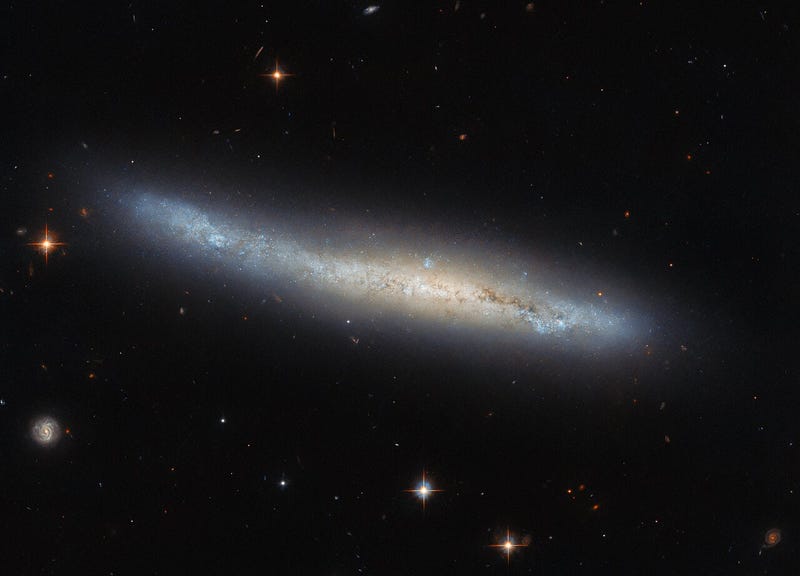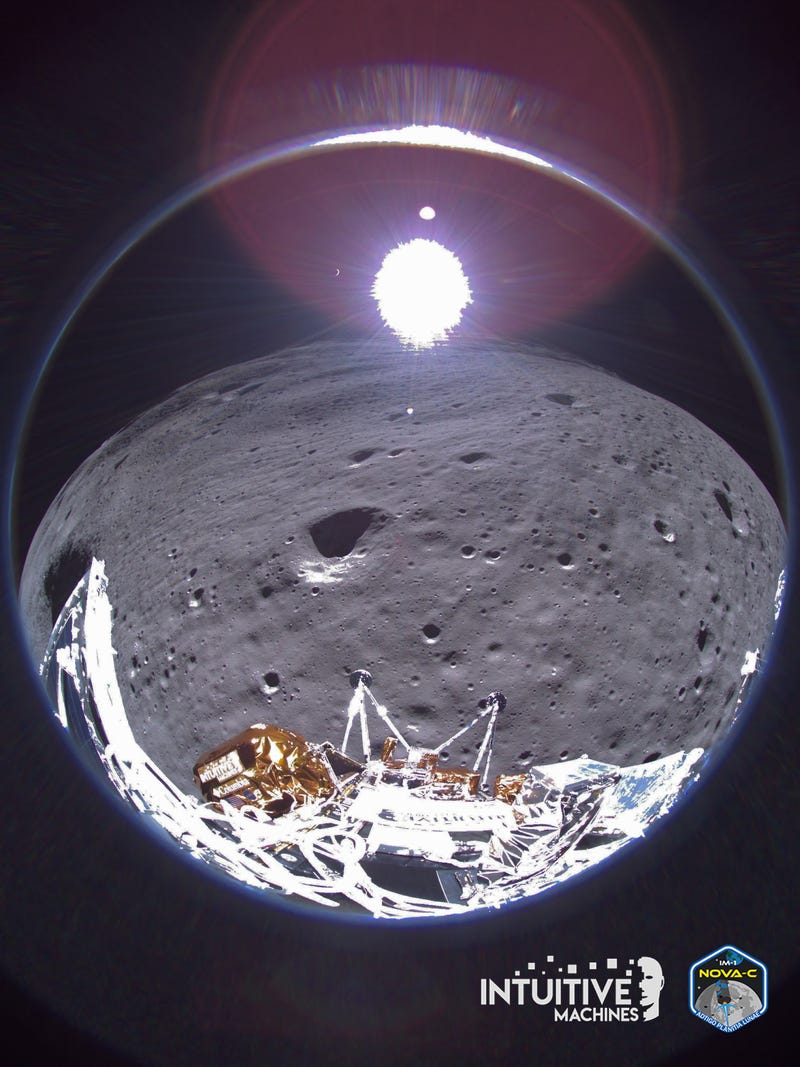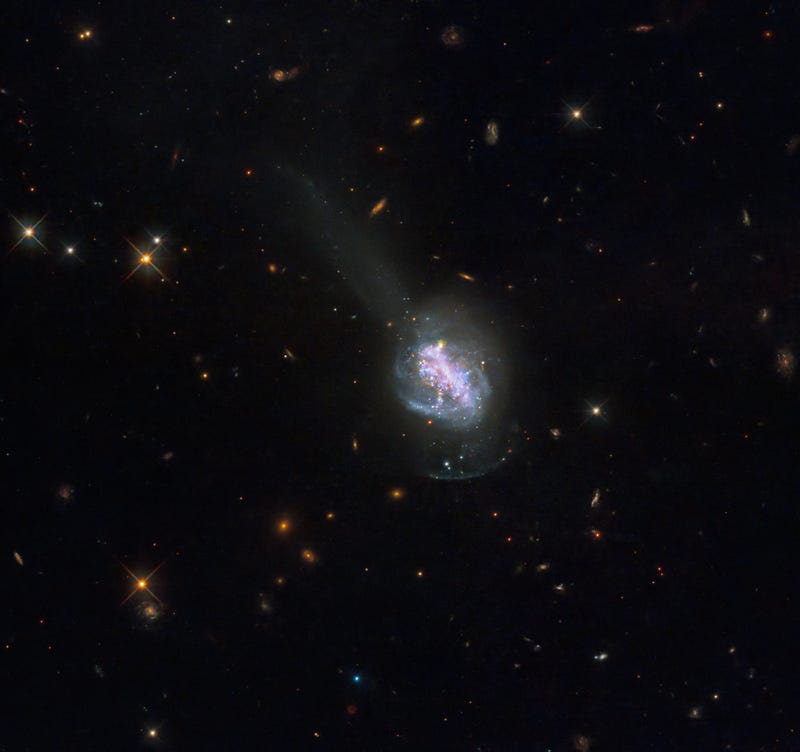The month is off to a running start when it comes to space, with a fresh crew launched to the International Space Station, some new astronomical insights, and the promise of a third SpaceX Starship test flight. Click through for the week’s coolest space imagery.
A rocket ready to rock

This intimate view of the Starship upper stage was captured on March 4, as ground crews loaded more than 10 million pounds of super-cooled propellant into SpaceX’s megarocket. With the Federal Aviation Administration investigation complete following the most recent test flight, the company is preparing for the third integrated flight test, tentatively scheduled for March 14.
Planetary births

Astronomers with the European Southern Observatory’s Very Large Telescope shared a visual treat this week, unveiling fascinating images that displayed the complexities of planet-forming discs around young stars. These detailed observations reveal the early stages of planet formation, illustrating the varied and intricate environments in which new planets are born, and offering new insights into the processes that shape planetary systems in our galaxy.
Incoming!

SpaceX’s Endeavour Crew Dragon is seen here approaching the International Space Station on March 5, with four Crew-8 members on board; the crew consists of NASA astronauts Matthew Dominick, Michael Barratt, and Jeanette Epps, and Roscosmos cosmonaut Alexander Grebenkin. The photo was taken while the ISS was 269 miles (433 kilometers) above the Indian Ocean southwest of Australia.
Hubble views a distant galaxy

This stirring image of UGC 11105, captured by the Hubble Space Telescope, shows the distant, almost comically perfect, spiral galaxy, which is located approximately 110 million light-years away from Earth in the Hercules constellation.
Future rocket

Blue Origin, founded by Amazon billionaire Jeff Bezos, has been running tanking tests of its upcoming New Glenn launch vehicle, seen here at the company’s integration facility in Florida. Should all go as planned, this 322-foot-tall (98-meter) rocket could launch in a few months.
A spiral from the side

This newly released Hubble image shows NGC 4423, a galaxy located some 55 million light-years away in the Virgo constellation. It bears the appearance of a nebulous blob, but it’s actually a spiral galaxy, similar to Andromeda or our Milky Way. It’s just that we’re seeing it from a side perspective. And in fact, you can make out the denser central bulge and its more sparsely populated surrounding disc, which includes the spiral arms.
Engine test

On March 6, NASA successfully completed a full-duration RS-25 engine hot fire, advancing the final certification phase for producing new engines for the Space Launch System (SLS) rocket—the designated launch vehicle for the space agency’s upcoming Artemis Moon missions. NASA ran the test at the Fred Haise Test Stand earlier this week at NASA’s Stennis Space Center in Bay St. Louis, Mississippi, and it was the ninth of a planned 12-test series.
Colorful plume

SpaceX’s launch of NASA’s Crew-8 mission on March 4, via a Falcon 9 rocket, left this colorful wake in the Florida skies.
Odie’s last shot

Intuitive Machines’ Odysseus lander captured this final shot of its final resting place on the Moon. As the lunar night settled in and its power diminishes, the lander’s short yet reasonably successful mission came to an end.
Ireland from space

The Copernicus Sentinel-3 satellite captured this stunning view of Ireland in January. The island, made up of Northern Ireland and the Republic of Ireland, remains green even in winter, “owing to the influence of the Atlantic Ocean and the presence of the Gulf Stream,” and due to southwesterly winds from the Atlantic, which “tend to bring a lot of rain in the northwest, west and southwest of the country,” according to ESA. As an aside, I visited Northern Ireland last summer, and was surprised to see palm trees in ornamental gardens.
When galaxies merge

Hubble’s greatness is on display again with this image, showing ESO 185-IG012, a luminous blue compact galaxy. Known as BCGs they’re “nearby galaxies that show an intense burst of star formation,” NASA says. And they’re “unusually blue in visible light, which sets them apart from other high-starburst galaxies that emit more infrared light.” Astrophysicists study BCGs because they offer insights into early galaxies, helping them to better understand galaxy formation and evolution from billions of years ago.
Preparing for goodbye

Crew-7, consisting of (from left to right) Roscosmos cosmonaut Konstantin Borisov, ESA astronaut Andreas Mogensen of Denmark, NASA astronaut Jasmin Moghbeli, and JAXA astronaut Satoshi Furukawa, are shown posing in their pressure suits. The crew, which arrived at the ISS on August 27, 2023, will don these suits again later this month when they return to Earth aboard the SpaceX Dragon Endurance.
To the Moon

Behold, a SpaceX Falcon Heavy rocket, carrying the X-37B spaceplane into orbit, photobombs the Moon, with shockwaves from the rocket causing a ripple effect across our natural satellite. Photographer Pascal Fouquet captured this breathtaking image on December 28, 2023 from Kennedy Space Center, Florida, for which he was recently awarded top prize in Sony’s World Photography Awards 2024.
Galaxy and comet

Italy’s Virtual Telescope Project 2.0 captured this amazing 120-second exposure of Comet 12P/Pons-Brooks, with the Andromeda galaxy in the background. The comet is currently heading towards the Sun, and maybe, possibly could be visible to the unaided eye in the coming months.
One of the most distant galaxies ever seen

Two groups of researchers, leveraging the Webb Space Telescope, recently conducted studies on the extremely bright galaxy GN-z11, which came into existence approximately 430 million years after the formation of our universe, which is now 13.8 billion years old. It’s among the most distant galaxies known to astronomers.
